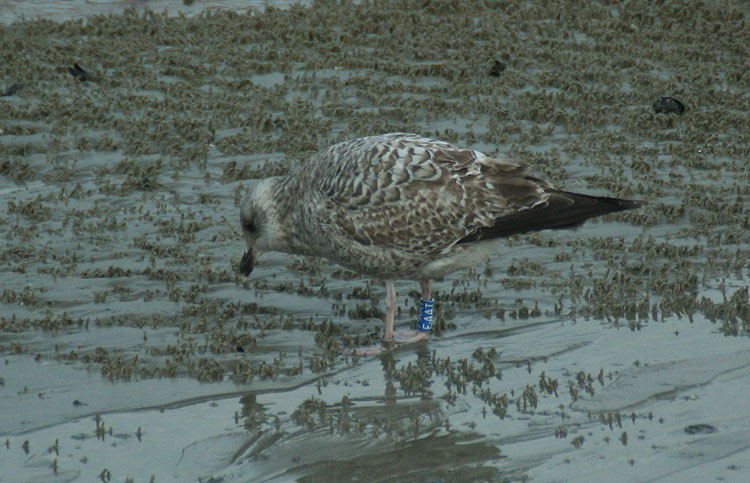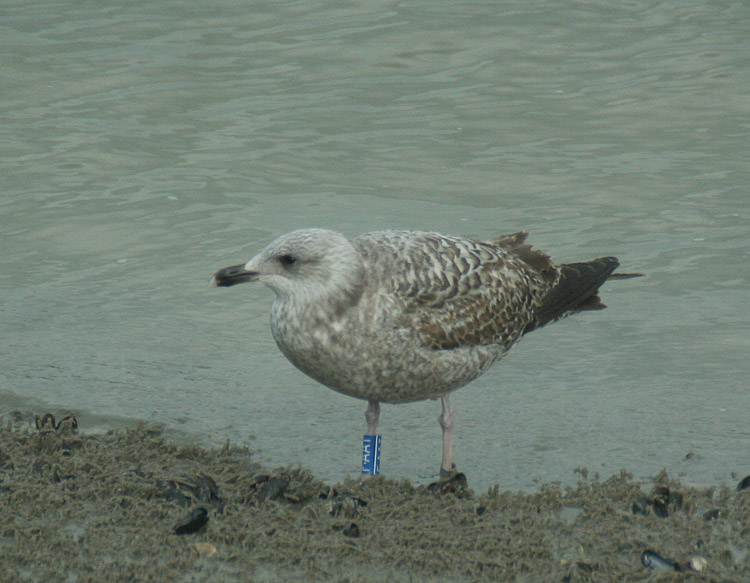 Herring Gull (argentatus & argenteus)
Herring Gull (argentatus & argenteus)
(last update: February 11, 2013)
Herring Gull (argenteus) FAAT 2CY & 6CY, February 2007 & March 2011, Belgium. Pictures Ies Meulmeester & Peter Adriaens.
Blue FAAT, Herring Gull argenteus, ringed as pullus in July 2006 at colony of Zeebrugge (Voorhaven), West-Vlaanderen, Belgium (51°21'0''N 3°11'0''E).
below: Herring Gull (argenteus) FAAT 2CY, February 23 2007, Nieuwpoort, Belgium. Pictures Ies Meulmeester.
A bird with most of the scapulars moulted to second generation feathers. The lowest scpaulars are still juvenile. All wing-coverts and tertials still juvenile.
The partial autumn moult in argenteus (moult from juvenile plumage into so-called "first winter" plumage) includes the body and head feathers. This moult starts as soon as the nest is abandoned (late June) and continues until January. In general, the head turns paler on throat and forehead. The breast will turn paler as well. The feathers on belly and vent will still be juvenile in most 1cy argenteus by November. From July onwards, the mantle and upper scapulars are moulted to second generation feathers, showing an anchor pattern and a dark base. The lowest row of scapulars are still juvenile by March in most 2cy birds (contra e.g. michahellis). The notched pattern of the juvenile scapulars is repeated on the juvenile lesser, lower lesser and median coverts, although the medians have paler centres. The juvenile greater coverts show a 'piano-key' pattern; on the outer greater coverts as well. The tertials have an obvious notched pale fringe and transversal bar.
The juvenile wing-coverts, rectrices and remiges start to bleach and show wear in the fringes from September onwards. The secondaries, primaries and primary coverts are dark with a small white tip, but the juvenile inner primaries show an obvious pale window, prominent from below and above. The under-wing is rather uniform grey-brown patterned. The tail has a broad sub-terminal band and isolated dark bars on the basal half. The iris is dark, the bill is blackish, sometimes with a paler base, and the legs are flesh-pink.

